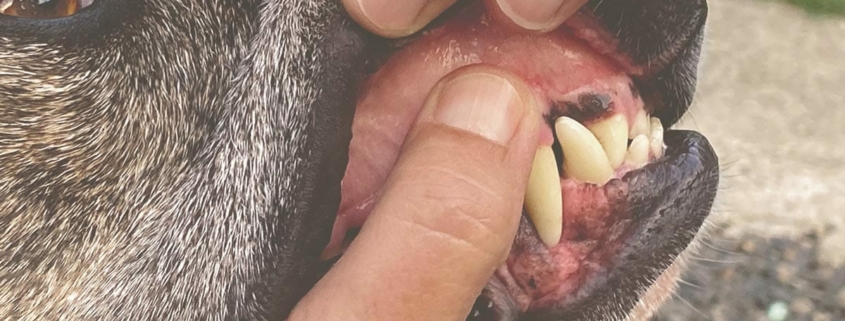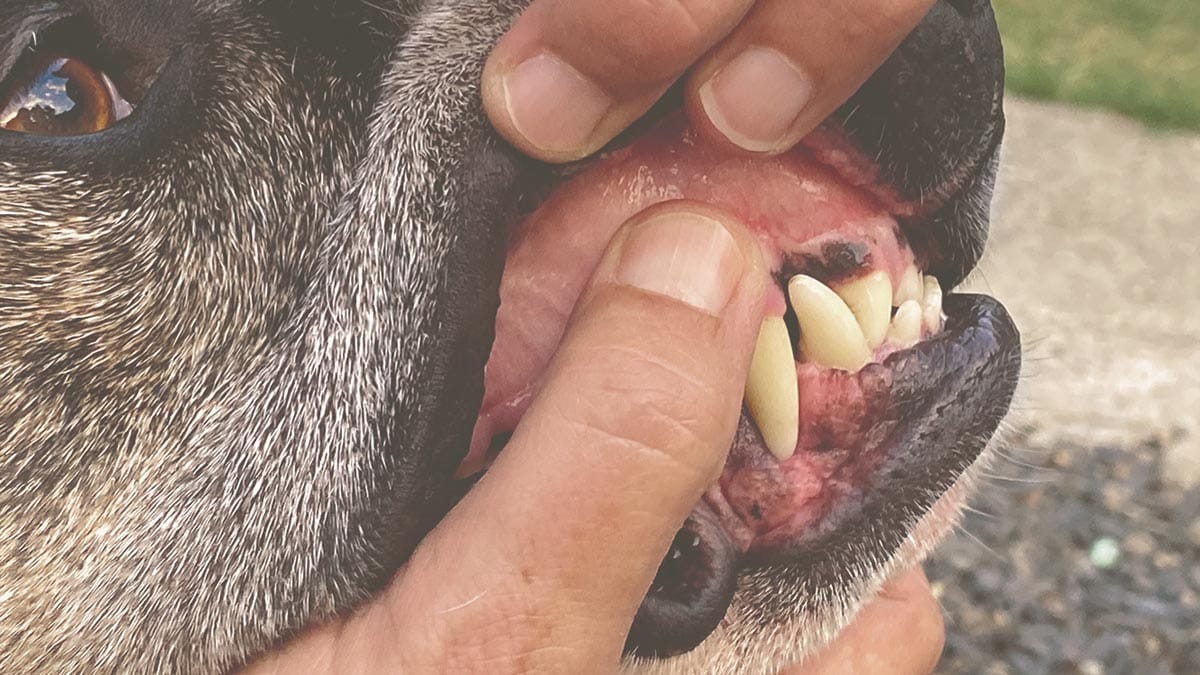
We Find Out What The Black Stuff Is On Your Dog’s Teeth
Alex Vicente • Updated on May 1, 2023
- This review contains affiliate links. Read more here.
- Not a substitute for professional veterinary help.
We all love getting kisses from our dogs.
Between that and puppy snuggles, it is about the best feeling in the world!
When you’re up close and personal with your dog, you may notice that there is something black on your dog’s teeth – and it’s not something that they just ate like dirt, yuck!
You may be wondering what that black stuff on your dog’s teeth is.
It is tartar buildup, and while it is not inherently bad, it can lead to other health issues like bacterial infections, loss of teeth, and even heart disease.
Tartar buildup can be black, yellow, orange, or brown.
The good news is that it’s not hard to remove tartar from your dog’s teeth, and there are steps that you can take to prevent future buildup.
It is important to take care of tartar buildup when you see it, though, to make sure it doesn’t lead to something more serious and you are taking the best care of your four-legged friend.
Table of Contents
What is Tartar?
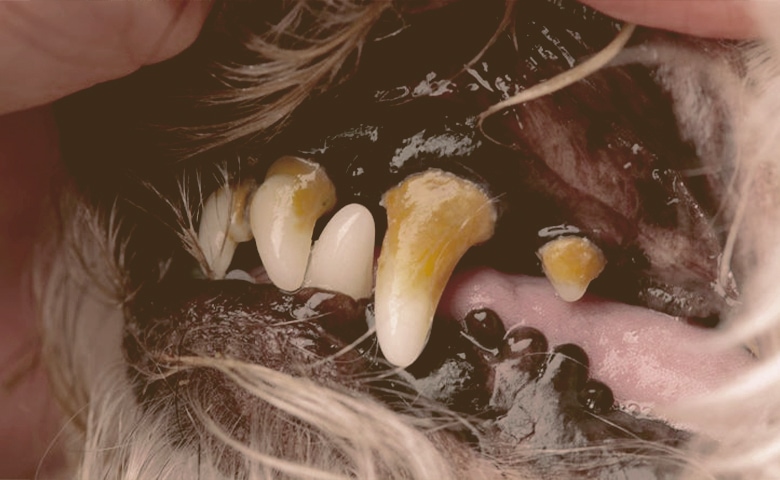
Plaque is a substance that forms on the surface of your dog’s teeth after they eat. It usually takes a few hours to show up, and it starts out gummy in appearance and feel. However, as it mixes with your dog’s saliva and the natural salt in your dog’s body, it begins to harden.
Over time, if you don’t brush your dog’s teeth regularly, more and more will build up. It will continue to harden, mineralize, and eventually, it becomes tartar. Tartar is rough to the touch and can be porous, making it a breeding ground for harmful bacteria both above and below your dog’s gum line.
Tartar can turn black, brown, or yellow, making your dog’s teeth look and smell bad. If it is really bad, you may need a vet to help you remove tartar from your dog’s teeth and medicine to help treat infections.
What Can Tartar Build Up Cause?
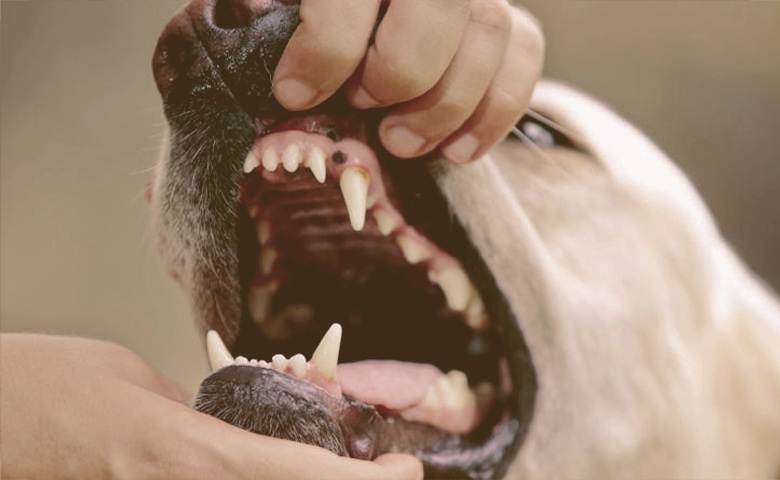
Tartar buildup can cause bacterial infections, gingivitis, tooth loss, and more.
- Bacteria that develop on the surface of the teeth can easily travel to your dog’s bloodstream. Once it’s in your dog’s blood, it can easily travel throughout your dog’s body, causing infections in the organs, including their kidneys and even their heart.
- Gingivitis is an inflammation of your dog’s gums, and it can also develop from the bacteria in tartar buildup on your dog’s teeth. In addition to general sensitivity, this can cause your dog’s gums to bleed or even recede. Receding gums expose parts of your dog’s teeth that do not have enamel, and this is extremely sensitive and painful for your dog.
- In severe cases, tartar buildup can also cause your dog to lose their teeth. This could be a result of advanced gingivitis. The tooth and the gums are so inflamed that the only way to treat them is through teeth removal, or they could prematurely fall out. You may also notice a foul smell coming from your dog’s mouth that is an indicator of infection.
If your dog has any periodontal disease, it may impact their ability to eat, causing weight loss and potential behavioral changes over time.
How Can I Prevent Tartar Buildup on My Dog’s Teeth?
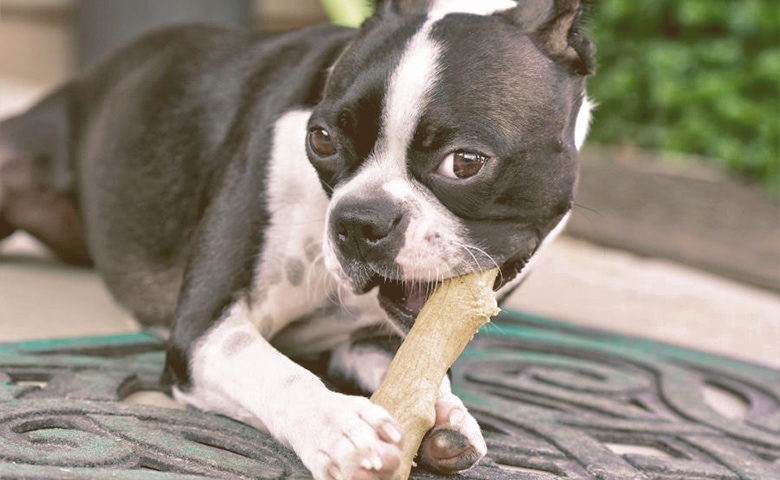
There are some steps that you can take at home to prevent tartar buildup on your dog’s teeth. This will help your dog’s teeth look clean and shiny and save you money from expensive vet bills.
- Brush your dog’s teeth daily. They make dog-friendly toothbrushes and toothpaste. If your dog won’t let you brush their teeth, you can try to wipe them down. This will help prevent plaque buildup before it can turn to tartar.
- Feed your dog food that helps promote dental hygiene and use water additives. Your vet can help you to find the right products for you, as it may require a prescription.
- Give them dental treats. There are plenty of toys and treats that are designed to promote doggie dental health, including reducing and removing tartar buildup. These will not help if your dog’s tartar buildup is severe, and do not give your dogs bones, hoofs, antlers, or nylon toys; they are not safe for dogs.
- Bring your dog for teeth cleaning once or twice a year. Even if you are doing everything you can at home, professional cleaning, often under general anesthesia, can help prevent long-term buildup and damage.
Much like in humans, a lot of the damage to your dog’s teeth following gingivitis and tartar buildup is irreversible, so you want to make sure to take good care of your dog’s dental hygiene.
How to Brush Your Dog’s Teeth
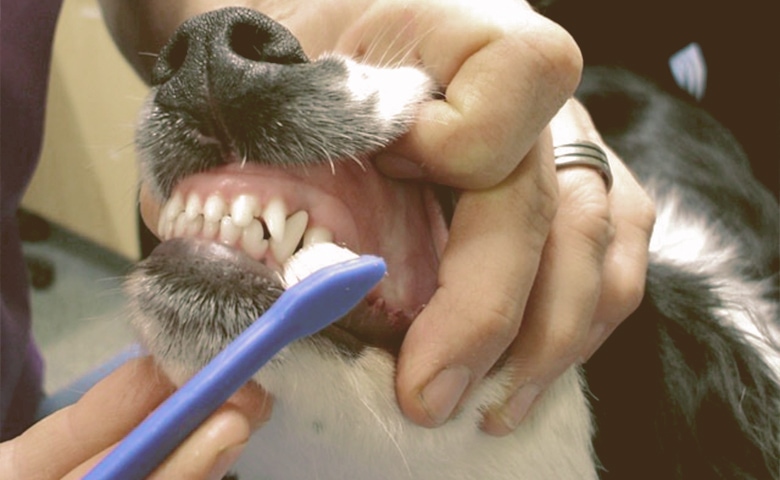
You should brush your dog’s teeth every day, but even if you only do it twice a week, it has been shown to make a difference in your dog’s dental hygiene. If your dog is not used to getting their teeth brushed, you may need to work up to a toothbrush. It is important that your dog be comfortable with the process to promote better cleaning and prevent any unintentional injury during the teeth cleaning process.
- Get your doggie toothbrush and toothpaste. You should never use human products on your dog as they contain ingredients that are not safe for your dog. If you have a smaller dog, you can use a finger toothbrush.
- Start familiarizing your dog with the process. Sit in front of your dog and put toothpaste on your finger. Let them lick it off your finger. They will see toothpaste as a treat, and it will help your brushing process in the long term. Some flavors may not be for all dogs, so you will want to find something that works for yours.
- After a few days, start to massage your dog’s teeth and gums with the toothpaste on your finger. You should use light pressure and move slowly, gently lifting their upper and bottom lips.
- Once your dog is comfortable, you can move to the toothbrush. Put the toothpaste on the toothbrush and gently lift your dog’s upper lip. You will want to make sure that the brush is at a 45-degree angle to help the toothbrush access the gum-like to remove plaque. Brush in a circular motion.
- After you are done brushing your dog’s treat, be sure to give them extra pets and their favorite treat! This again will help reinforce that this is a normal, fun activity.
All dogs are different, so it may take some time for your dog to become comfortable with getting their teeth brushed. This is often overlooked by dog owners, but it is essential to your dog’s health and happiness.
The Final Say on the Black Stuff on Your Dog’s Teeth
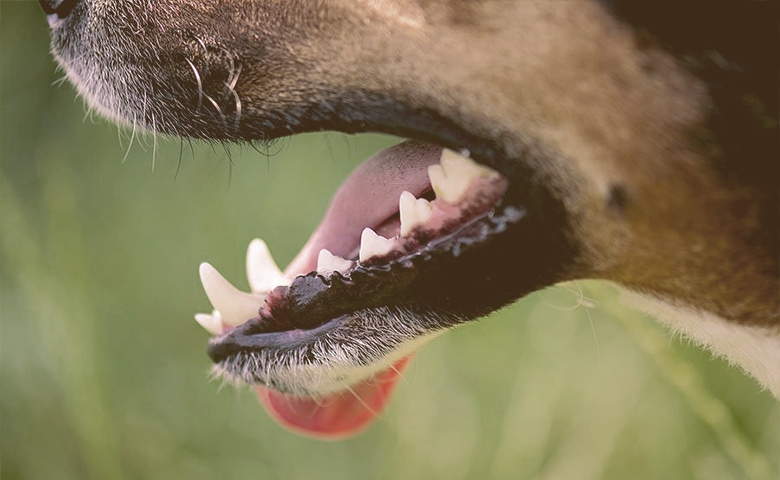
Plaque and tartar buildup on your dog’s teeth is normal, but just because it is a normal process doesn’t mean it is a healthy one! Humans regularly brush their teeth to remove this buildup, and you will want to do the same with your dogs. Regularly brushing your dog’s teeth will prevent that black stuff from growing on their teeth and gums. If not, it can lead to long-term health problems, like tooth decay, loss, and infection.
If you notice that there is black stuff on your dog’s teeth, brush them. Try to remove it at home. If it is severe, you will want to take your dog to the vet so that they can remove it and treat your dog for any infections they may have. Dental hygiene is often overlooked, and leaving it untreated could cause your dog’s life to be cut short, so it is important to get the black stuff on their teeth treated if needed.

